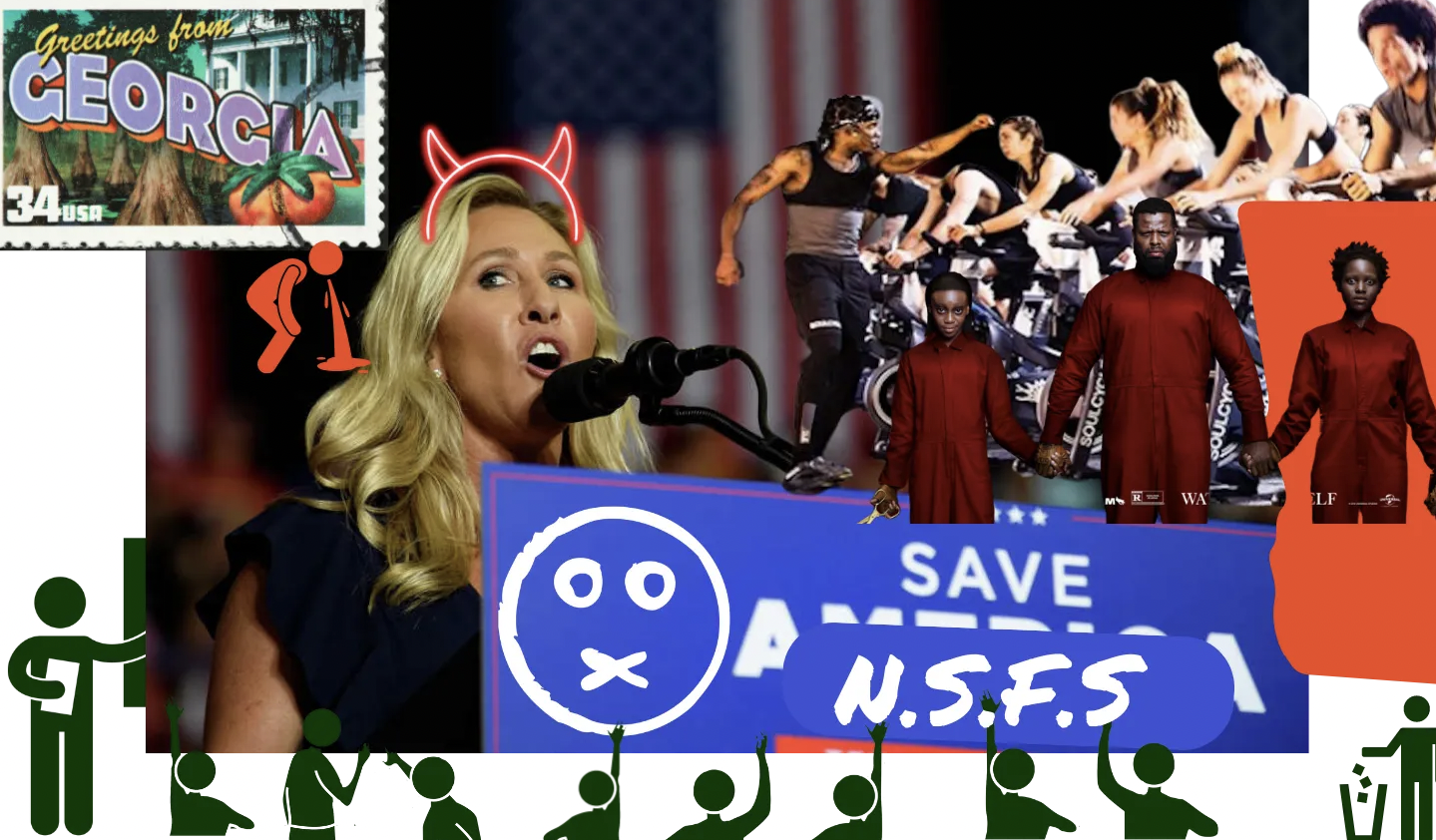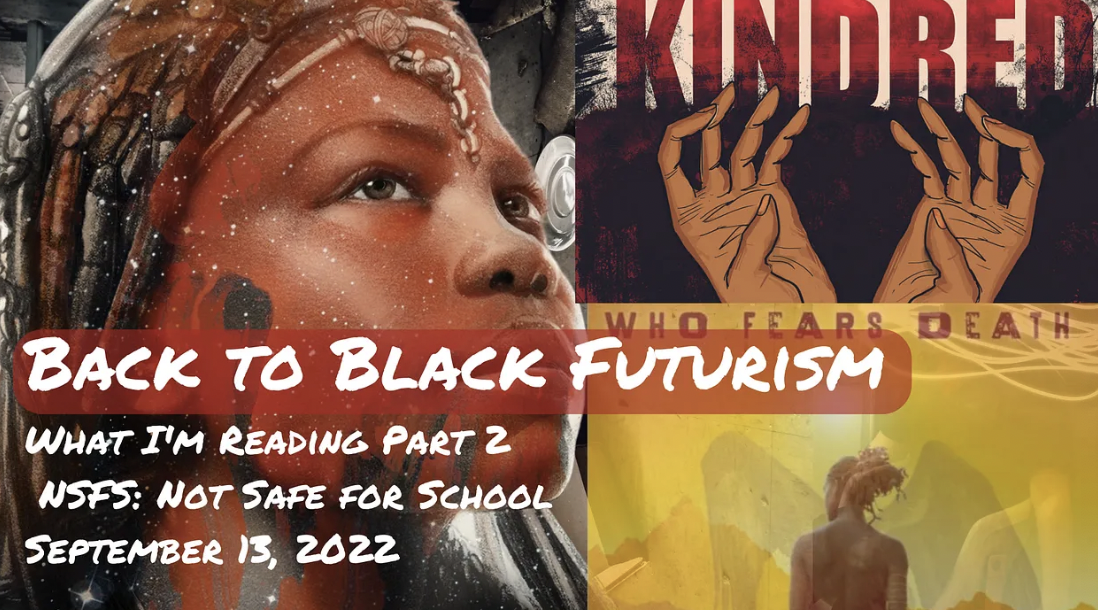Back to School, Back to Black Futurism
Part 1 of What I'm Reading about systemic racism, the repetition of history, and what Afrofuturism has to say about all that.
In this post: part 1 of What I'm Reading about systemic racism, the repetition of history, and how it applies to Afroturfism.
Last week: on the teacher shortage & what the dumb-ass decisions of Florida & Arizona say about white people's undue influence on the US education system.
Next week: what imaginative discourse offers us in terbulent times: hope for a different future.
Oh hey folks,
It’s officially back to school for nearly everyone, and according to the National Center for Education Statistics, white students are officially in the minority: of the 49.5 million public school students, 22.4 million are white.
What the Republicans have used to fear-monger and rabble-rouse whites naturally signals what I’d like to take as a moment of hope for the U.S: the more we educate all people, most especially Black and peoples of color, the brighter our collective futures will be.
Now, if we can only bring education curriculum and teacher training (or teacher screening, to be real) up to par.
So, in honor of going Back to School and hopefully making the future brighter and Blacker all at once, this week’s post is an extended “What I’m Reading.” Think of it as extracurricular homework. (you can take the teacher out of the classroom, but she’s still gonna assign reading).
What I’m reading about white people:
As I think about the promise of Afrofuturism to imagine the present differently, and what is stopping Black (and Brown) futures from shining (more on that next week), I must turn inward to the history of white people. I can say with some authority granted to me by a PhD that all signs point to shit being better run when it’s not in our (white) hands. Here’s to a Black(er) future. This is not about hating white people, or blaming them for all of this country’s social ills (it’s not blame so much as historically correct attribution). Rather, this is about the importance of cultural diversity, and what non-white ways of thinking and exploring the world have to offer all of us.
Nell Irvin Painter’s The History of White People (W.W. Norton, 2011) is a fun place to start, a light read if you’re used to reading peer-reviewed history articles, some of her descriptions had me cackling like the lesbian sea witch that I am.
As Painter writes about the mythology of the white race: “Although science today denies race any standing as objective truth, and the U.S. census faces taxonomic meltdown, many Americans cling to race as the unschooled cling to superstition. So long as racial discrimination remains a face of life and statistics can be arranged to support racial difference, the American belief in races will endure.”
If psychology and self-improvement is more your vibe: psychologist Janet E Helms’ thin booklet A Race is a Nice Thing to Have: A Guide to Being a White Person or Understanding the White Persons in Your Life (2020).
In this action-based book, you’ll learn: How to make conversation about race visible, a topic from which many/most people run. It also covers the six levels of White Identity, especially what the term “disintegration” has to do with white people just not seeing reality. Or, as Helms far more intelligently defines it as: “the issues one often works through as they form a clearer basis of White identity. At the same time, disintegration may mean just that the “white person wishes to stop or eliminate the possibility of integration.”
What I’m Reading About U.S. Education
For the past week, I’ve been researching what should have been a pivotal moment in U.S. education: Brown vs. BOE, which passed in 1955. The false promise of desegregation is alive and well today, where schools remain just as segregated as they were in the 1960s.
What I’m reading: Uncivil Rights: Teachers, Unions, and Race in the Battle for School Equity by Jonna Perrillo (U of Chicago Press, 2012).
Description: Almost fifty years after Brown v. Board of Education, a wealth of research shows that minority students continue to receive an unequal education. At the heart of this inequality is a complex and often conflicted relationship between teachers and civil rights activists, examined fully for the first time in Jonna Perrillo's Uncivil Rights, which traces the tensions between the two groups in New York City from the Great Depression to the present.
In the fourth chapter of this book, titled “An Educator’s Commitment,” Perrillo describes what Harlem schools were like in 1964:
“Minority schools offered fewer courses and had larger class sizes than white schools, and teachers in minority schools were more frequently in the position of teaching subject areas in which they were not trained to teach, leaving them to become “just… a warm body serving as a babysitter.”
I’m here to tell you, at both the public and charter urban high schools I taught at, this remains largely the case today. When I taught at a NYC public school in Harlem, I was told I would be coming in as a full-time permanent teacher as long as I passed an inane and long list of pricey teacher certifications by the start of the school year. That turned out to not be the case: my license was held up in paperwork this week exactly three years ago. School had already started, and I was already in the classroom, but I was told I could not be paid for any of those days until I completed another series of courses to “train” me to be a substitute teacher.
I was thrilled to be teaching, and desperately wanted to get into the all-powerful New York teacher’s union, so I kept teaching for the promise of back pay that officially I wasn’t allowed to request. I’ll spare you the inane Kafka-esque details that led to me not receiving a single paycheck until nearly 2 months of teaching, and then when I did receive it, it was for a little under $600 and was a substitute teacher’s salary.
In my time in the underworld of the public school system, I discovered just how many of us teaching full time at the school were on substitute pay, waiting out the department of education’s ruthlesslessly inefficient bureaucracy of teacher licensing. And then I felt like a chump, since I knew all too well about the adjunct labor crisis in higher education, where 75% of U.S. undergraduate courses are taught by an adjunct professor, who makes an average salary of 24k a year, without benefits.
This is why the “great teacher walkout” is not a new crisis, rather, it’s based on old policy that allows education departments to keep their labor overhead low.
Perrillo quotes one teacher from a survey taken in 1964, and I felt the sting that this historical reality was also my present-tense reality when I was teaching:
“The situation is tricky because I don’t want to be an authoritarian. I don’t want to be the teacher I am supposed to be but sometimes I am unable to be the teacher I want to be.”
It’s always strange to read your experience in history, especially considering “how much has changed” since the 1960’s and the advancements of Civil Rights. But has it really changed? I’ve lived exactly as the teacher from the 1960s described, and it is hard. I did my best to operate my classroom where mutual respect is reciprocated between students and teacher, and most especially, student to student. It didn’t always work, some days I’d watch my meticulously planned lesson that I had stayed up late writing the night before disappear into the ether merely 5 minutes into class. Disruptions were constant, and more often than not, coming from the adults who ran the school. Very little learning was done. But you’re only as good a teacher as your last class, and getting up each day to teach in this fully immersive, exhausting way took its toll on me.
Nothing has changed. Since 1964. Perhaps now those of you who’ve been reading for a while will understand my continual citation of the writing of James Baldwin.
"Not everything is lost. Responsibility cannot be lost, it can only be abdicated. If one refuses abdication, one begins again."--James Baldwin
What I recommend if you love James Baldwin: Eddie Glaude’s Begin Again: James Baldwin’s America and Its Urgent Lessons for Our Own.
But it’s not all doom and gloom, stay tuned next for my reading recommendations for everything Afrofuturism.
xoxo,
Allison









